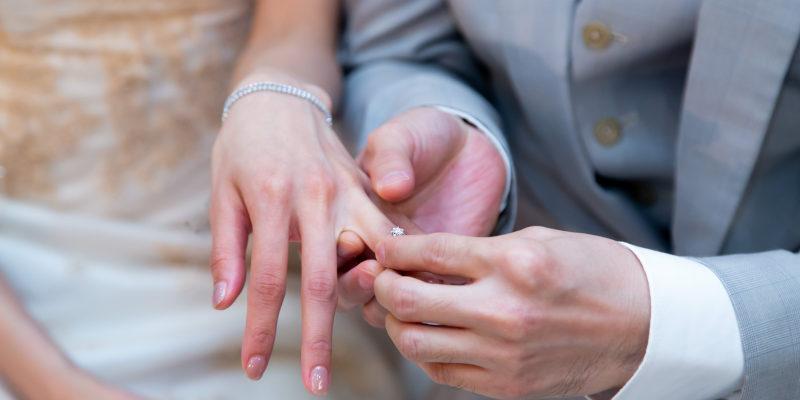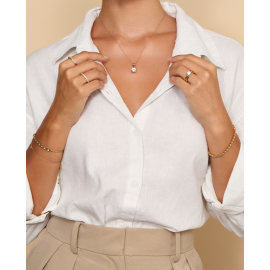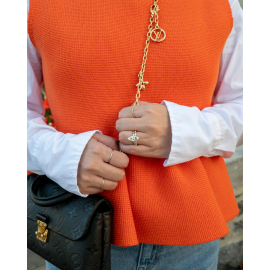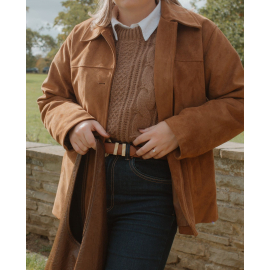Price match guarantee

We’ve teamed up with Klarna to provide flexible payment options, allowing you to shop the way you want. With Klarna, you can split your payment into 3 instalments or choose to pay later, making your shopping experience smoother and more convenient. Your order total must be between £100 and £499 to qualify.

We’ve teamed up with Klarna to provide flexible payment options, allowing you to shop the way you want. With Klarna, you can split your payment into 3 instalments or choose to pay later, making your shopping experience smoother and more convenient. Your order total must be between £100 and £499 to qualify.

June 05, 2020 | by Admin
It is law within the UK that every item of precious metal sold such as Platinum, Gold, Silver is stamped labelling the item with the type of metal it is. Platinum pieces which weigh less than 0.5 grams, 18ct Gold and Palladium pieces weighing less than 1.0 gram and Silver pieces weighing less than 7.78 grams are except from hallmark.
At Diamonds Factory all our products are hallmarked as per UK hallmarking law from London Assay Office (The GoldSmith Company)
The Goldsmiths' Company Assay Office is the oldest assay office in the United Kingdom. It has provided hallmarking services since The Goldsmiths' Company was founded in the 1300s. The company received its royal charter in 1327 and ranks 5th in order of precedence of the 12 Great Livery Companies of the City of London.
Hallmarking dates back to the 1300s when Edward I of England passed a law requiring any item made of silver, which was offered for sale, to be at least of equal quality as that of the coin of the realm (silver currency). The wardens of The Goldsmiths' Company were tasked with visiting workshops in the City of London to assay (test) silver articles. If these articles were found to be below standard they were originally destroyed and the metal forfeited to the King. If they passed, each article received the King's mark of authentication - the mark of a leopard's head. By 1478, there were several hundred workshops and merchants manufacturing silver articles in the City of London. It was not possible for the wardens to visit them all so the merchants were ordered to bring their items to Goldsmiths' Hall for testing and marking and a permanent Assay Office was established in the building. This is the origin of the term hallmark - struck with the King's mark at Goldsmiths' Hall.
In 1544 the Goldsmith's Company adopted the King's mark as their town mark and the mark of the leopard's head is now internationally recognised as the mark of this assay office.
The Goldsmiths's Company Assay Office is still based at Goldsmiths's Hall and remains the oldest company in Britain to be continually trading from the same site. However, it also has two satellite offices; at Greville Street in Hatton Garden in the heart of the London jewellery quarter and within a high security complex near London's Heathrow airport. It now has a new off-site facility within the Dalston-based jewellery manufacturer, Allied Gold. This is the first time in the Assay Office's 700 year history that it has opened permanent hallmarking services on a customer's premises.
In addition to hallmarking, the office has now expanded its range of services to support the jewellery trade and enforcement authorities. It offers a variety of specialist analytical services including nickel, lead & cadmium testing, antique silver dating, non-destructive compositional analysis, plating thickness measurement and a melt and assay service for scrap precious metal carried out in their fully independent on-site laboratory. Other services offered are a jewellery valuation service, laser marking, trading standards assistance, high quality photography and a comprehensive range of training and educational seminars, lectures and specialist events.






Choosing the perfect engagement ring for your partner can be a difficult decision. From solitaire and halo styles to selecting the right diamond shape and metal – the possibilities for that perfect ring are endless. But with so many engagement ring styles to choose from, you might feel a little daunted to begin with. In this article, we discuss the different types of engagement rings to suit every taste to help you find the ideal ring for your loved one.
Choosing Between Ring Styles
From solitaire rings to pavé settings and emerald-shape diamonds, there are uncountable different ways you can customise an engagement ring and millions of combinations of details to make your ring unique. But that can feel a bit daunting. Never fear though, we’ll break down the most popular options to help you choose the perfect ring for your love.
Most Popular Engagement Ring Styles
The top three most popular styles of engagement rings are solitaire (rings featuring a single, lovely stone), halo springs (a centre stone surrounded by a halo of smaller gems), and trilogy rings (three-stone rings that represent the past, present, and future you have together).
What is a solitaire ring?
A solitaire ring is a minimalistic style of engagement ring that has been extremely popular since it’s original design in the 1940s. They feature a single gemstone mounted on the ring band usually using a prong setting, although other styles are popular as well.
The band of the ring can be plain but also can be decorated with gemstones or patterns. The most popular types of solitaire ring usually feature a single white diamond.
-Popular solitaire ring designs
blog_cat_related_products_section_1
What is a halo ring?
Halo rings are perfect for those looking for a little more opulence. This beautiful style of engagement ring features a large central gemstone – often a diamond, emerald, or ruby – encircled by a ring of other small stones (typically diamonds). This style of ring was really popular in the Victorian era before falling out of fashion but came roaring back into style during the 1930s and ‘40s so it offers a really vintage feel which many people love.
-Popular halo ring designs
White Gold Round Diamond Engagement Ring
From £324
White Gold Round Diamond Engagement Ring
From £408
White Gold Oval Halo Diamond Engagement Ring
From £1,016
Prong Setting Halo Diamond Engagement Ring
From £1,302
White Gold Emerald Diamond Engagement Ring
From £433
Prong Setting Plain Engagement Ring
From £422
Prong Setting Plain Engagement Ring
From £396
Prong Setting Engagement Ring
From £593
Prong Setting Diamond Hidden Halo Rings
From £852
Prong Setting Solitaire Diamond Engagement Ring
From £532
Prong Setting Solitaire Diamond Engagement Ring
From £494
Prong Setting Side Stone Halo Engagement Ring
From £432
Prong Setting Side Stone Halo Engagement Ring
From £881
Prong Setting Side Stone Halo Engagement Ring
From £1,538
Prong Setting Side Stone Halo Engagement Ring
From £851
4 Prong Setting Round Diamond Side Stone Engagement Ring
From £494
What is a trilogy ring?
Beautiful, elegant, and timeless, trilogy rings (also known as three-stone rings) make stunning engagement rings. They feature three individual stones – either all the same size or have a larger centre stone. These stones represent the three moments in time of your relationship, the past, present, and future.
There are plenty of ways to customise a trilogy ring. Asymmetrical stones in different shapes give these rings a contemporary charm, mix-and-matched stones can suit many different occasions, or stones of different sizes can offer a subtle uniqueness to the ring. The possibilities are endless.
IN-STORE CONSULTATIONS
Looking to create the perfect ring for your beloved? Visit us in store for a design appointment where you can customise every aspect of your engagement ring.
Choosing between scallop, pavé and channel setting
The setting of the stones in your engagement ring is an important choice to make. It can have a big effect on the overall look of the ring and there are many different types of settings to choose from. How do you choose between a scallop, pavé, and channel settings? Here’s some information to make the decision easier.
- Pavé
A pavé setting is a popular style of setting in which several small diamonds or gemstones accentuate the main stone, creating a field of sparkle. Usually, the diamonds are so closely set that the metal beneath them can’t be distinguished from the diamond. There are different types of pavé setting such as French pavé where the metal on the outer edges are cut away in a V shape to let more light into the stones.
- Scallop
A scallop setting is actually a variation of the French pavé setting style. the metal beads holding the accent diamonds have U-shaped cutouts underneath, reducing the look of metal. The key difference between a pavé setting and a scalloped pavé setting is the shape of the metalwork. While the French pavé setting is cut in a V shape, the scalloped pavé setting features a U shape or scoop instead.
- Channel
The channel setting is a type of ring setting where stones on the band of the ring are set along a track between two walls of metal. The stones are nestled against one another and not separated by prongs, beads, or bezels. This style of setting is generally more cost effective but might not look as sparkly because the light in the stones is limited.
-Choosing your ring claw style
The ring claws, also known as prongs, is a setting type where the diamond or gemstone is secured onto the ring using a number of protruding claws that grip the stone. The most common number of prongs are four or six.
- Ball Claws
Ball claws are just what they sound like. The prongs securing the stone look like small balls – they’re round and smooth and protrude slightly above the stone itself.
- Talon Claws
Talon claws describe a prong setting style that look just like the talons of a bird of prey. Elongated polished claws narrow to a fine point pointing inward towards the centre of a gemstone.
- Box Claws
A box claw setting is a setting in which the diamond looks like it has been encased in a box. Each corner features a corner of metal with prongs of metal encasing the corner all the way down to the band.
- Rubover
Sleek and contemporary, a rub over setting holds the gemstone in place with an overlap of metal that's physically worked over the stone and encircles the edge of the crown. This type of setting is also known as a bezel setting.
We hope we have helped you better understand some of the settings and styles of rings available to help you choose the perfect ring. If you’re looking for more information, please do check out our engagement ring guide which goes over other aspects of buying an engagement ring such as the four Cs and budgeting.